![]()
![]()
![]()
Use LEFT and RIGHT arrow keys to navigate between flashcards;
Use UP and DOWN arrow keys to flip the card;
H to show hint;
A reads text to speech;
183 Cards in this Set
- Front
- Back
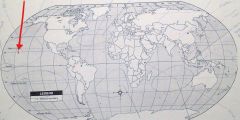
|
Kamilo Beach, Hawaii
|
|
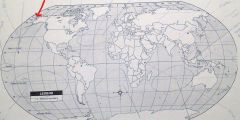
|
Shishmaref, Alaska
|
|

|
The Great Lakes
|
|
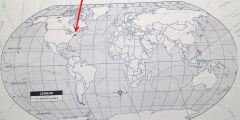
|
Fresh Kills Landfill, New York
|
|
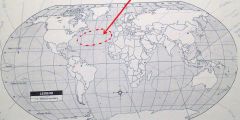
|
North Atlantic Gyre
|
|
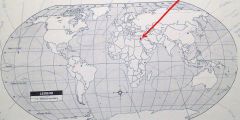
|
Jerusalem, Israel
|
|

|
Manacis, Amazonia, Brazil
|
|

|
Linfen, China
|
|
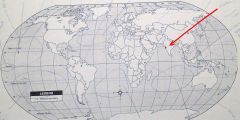
|
Mumbai, India
|
|

|
Sumatra, Indonesia
|
|
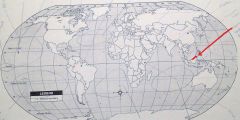
|
Borneo, Southeast Asia
|
|
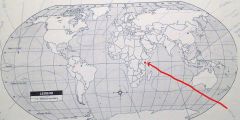
|
Kenya, Africa
|
|
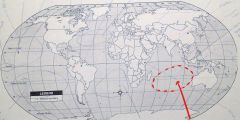
|
Indian Ocean Gyre
|
|
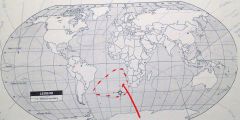
|
South Atlantic Gyre
|
|
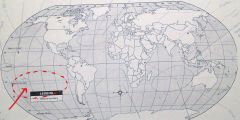
|
South Pacific Gyre
|
|
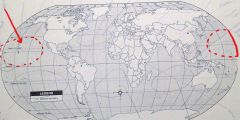
|
North Pacific Gyre
|
|
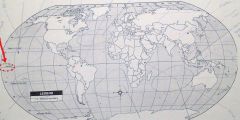
|
Kiribati
|
|

|
Superior
|
|
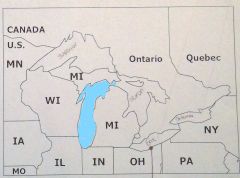
|
Michigan
|
|
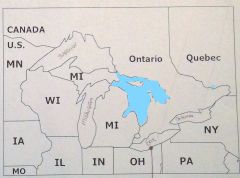
|
Huron
|
|
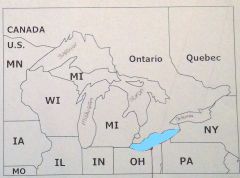
|
Erie
|
|
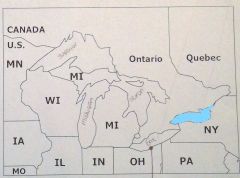
|
Ontario
|
|
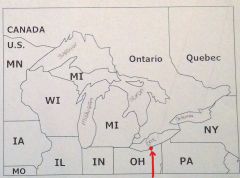
|
Cuyahoga River
|
|
|
What is the number one impact on biodiversity and examples of it?
|
Habitat loss/alteration - Deforestation, large scale agriculture, and development.
|
|
|
What are the other four impacts on biodiversity and examples of them?
|
1. Competition with invasive species - Zebra Mussels, Kudzu, and Purple Loosestrife 2. Overexploitation - Over hunting, fishing, or harvesting. 3. Pollution - Ocean pollution killing animals 4. Climate change - Ice melting, rising temperatures, and rising sea levels. |
|
|
What are the three reasons that the loss of biodiversity is an urgent issue according to E. O. Wilson?
|
1. Human population growth leads to habitat loss 2. We rely on other organisms for our needs/wants 3. Biodiversity is being lost forever through extinction |
|
|
E. O. Wilson's credentials are?
|
He is an author, and decorated biologist.
|
|
|
What is an example of a structural solutions regarding biodiversity?
|
The Endangered Species Act (1973)
|
|
|
What are two legal categories for officially "listed" species?
|
1. Threatened 2. Endangered |
|
|
What is the total number of species "listed" and are there more plants or animals?
|
1,652 species with a majority being plants.
|
|
|
Which two states have the most species "listed"
|
California and Hawaii; they both 300+ listed
|
|
|
What are general goals/reasons for habitat restoration?
|
To rebuild ecosystems to where they were before they were damaged via pollution, climate change, etc. To restore homes for species so they can thrive.
|
|
|
What is the general process of forest certification? What are it's goals? What is the role of the FSC and an Ecolabel?
|
Forest Stewardship Council comes to someones property and inspects it to make sure they are doing things ecofriendly, if they are they receive an ecolabel for their products that come from that forest. Goals are to make sure more companies are managing their forests well.
|
|
|
What are the goals and potential benefits of ecotourism (if it is done well?)
|
The goals are responsible travel to natural areas, and if done well it protects the environment and stimulated local economy.
|
|
|
What are examples of citizen action?
|
1. Michael Werike - "Rhino Man" 2. Wangari Maathai |
|
|
Michael Werikhe
|
Goldman Prize Winner from Kenya, Africa. Walked miles to spread awarness of the rhino.
|
|
|
What did Michael Werikhe mean by "conservation cannot be imposed?"
|
People cannot be forced to be conservative. They must be educated and aware; that will make them want to be conservative.
|
|
|
Wangari Maathai
|
Goldman Prize Winner, Nobel Peace Prize winner from Kenya, Africa. Started the Greenbelt movement - plants veggiation around the world.
|
|
|
What does NIMBY stand for and how does it relate to waste issues?
|
It stands for "Not In My BackYard" It relates to waste issues because it means people don't want hazardous centers (Landfills, Incineration Plants, etc.) being built in close proximity to their homes.
|
|
|
What does "There is no away" mean?
|
That waste doesn't just dissapear when the garbage man picks it up. It all goes somewhere and has effects our on world.
|
|
|
What category of material has the highest percent of muncipal solid waste?
|
Paper/paperboard - 27%
|
|
|
Which categories of materials are tied for second highest percent of municipal solid waste?
|
1. Plastic - 15% 2. Yard trimmings - 15% 3. Food scrapes - 15% |
|
|
Per person per day trends of MSW.
|
1960 - 2000 it increased 2000 - 2005 it decreased 2010 - 2014 stabilizing around 2.45 |
|
|
Trends of waste disposal in US
|
Landfills - decreased from 1986 - 2014 Incineration - stable from 1986 - 1996, and increased from 1996 - 2014 recycling/recovered - increased from 1986 - 2014 |
|
|
What are the trends for the number of landfills and curbside recycling programs in the United States?
|
Landfills - decreased Curbside recycling - increased |
|
|
What are pros/cons of incineration?
|
Pros 1. not as much space 2. usable heat energy Cons 1. gas emissions 2. no recycling 3. ash must be landfilled |
|
|
What are pros/cons of landfills?
|
Pros 1. methane recovery 2. keeps trash out of cities Cons 1. takes up space 2. unpleasent smells 3. trash can blow out of landfill |
|
|
Who advised the waste management hierarchy? Why is it a hierarchy? |
Waste management professionals created it by listing in order of priorities of the amount of waste produced, how it is disposed of, and which is most to least preferred.
|
|
|
What is the Solid Waste Management Hierarchy order? |
1. Source reduction 2. Reusing 3. Recycling/composting 4 - 5. Incineration/landfilling (interchangable) |
|
|
How does reducing, reusing, and recycling affect the materials economy? Why are recycling and reusing most preferred?
|
Reducing lowers all five stages, reusing eliminates extraction,production, distribution, consumption, but will still eventually be disposed of, and recycling eliminates extraction but must be reinserted into production and the other three stages. Reducing/reusing is most preferred because it has greatest affect.
|
|
|
What does the recycling symbol look like? What does each arrow represent?
|
It represents the three stages of recycling - collection and processing, re-manufactoring, and purchased recycled products.
|
|
|
What are some characteristics of Fresh Kills Landfill that got it featured in You Are Here? What is it's current status?
|
It was the worlds largest landfill, with 150 million tons of garbage. Currently it is being turned into a park.
|
|
|
How did waste originally get into the Eastern and Western North Pacific Garbage Patch? What materials are found there?
|
The trash comes from ship spills, the wind, and pipes (sewage, storm drains, etc.) It is composed of plastic, rubber, paper, wood, fishnets, and may other substances.
|
|
|
What is photodegradation
|
When light break down a substance.
|
|
|
What is the significance of Kamilo Beach?
|
It is where garbage from the Great Pacific Garbage Patch accumulates.
|
|
|
What is the role of Capt. Charles Moore and the "5 Gyres Institue"?
|
They are the premier researchers on the North Pacific Garbage patches.
|
|
|
What are some methods used to sample waste in the ocean?
|
Plankton nets used to scoope small particles of trash, and satelitte and radar gear used to track garbage.
|
|
|
What are possible effects of ocean pollution?
|
Entanglement, effects on the food chain, and extinction of animals
|
|
|
What are some examples of entanglement?
|
Sea life caught in old fishing nets and the turtles shell who grew to the shape of the six pack container.
|
|
|
What does plankton mean? What is their role in the ocean food chain?
|
It means drifter, and they are one of the lowest organisms in the food chain, if they begin to die than the rest of the food chain will suffer.
|
|
|
How does ocean pollution effect the Laysan Albatross?
|
They are eating pollution and it is killing them. They also store the pollution in their second stomach to feed their young, and that is killing the younglings as well. If this continues that run the risk of going extinct.
|
|
|
What are personal solutions related to ocean pollution?
|
1. Using reusable grocery bags 2. Keeping trash out of storm drains 3. Keping track of your trash at the beach. |
|
|
What are structural solutions related to ocean pollution?
|
1. The CA law banning plastic bags 2. International Coastal Clean-Up |
|
|
What is the meaning of Capt. Charles Moore's quote "Waste is an antiquated concept."
|
That the old idea of just throwing things out is no longer how our world shold be. It is an out of style idea and we should think of new things to do that don't create waste.
|
|
|
Eco-Ethical Mountain - Appreciation as it relates to water issues as an Anthropocentric view
|
1. Home for animals that we eat 2. Use for transportation 3. Produces energy 4. We drink it 5. Agricultural uses |
|
|
Eco-Ethical Mountain - Appreciation as it relates to water use as an Ecocentric view.
|
1. Habitat 2. Animals drink it 3. Plants need it 4. Helps regulate environments (water cycle) 5. Shapes the earth |
|
|
What percent of Earth's surface is water?
|
71% percent of Earth's surface is water
|
|
|
What percentage of Earth's water is fresh water? What percentage is Ocean?
|
3% of Earth's water is fresh and 97% is Ocean.
|
|
|
Which of the five Great Lakes is: shallowest, deepest, and largest?
|
Lake Superior is the largest and deepest. While Lake Erie is the shallowest.
|
|
|
What is significant about the amount of fresh water in the Great Lakes?
|
It is the worlds largest source of surface fresh water.
|
|
|
What is the significance of the slow turnover rate of the Great Lakes?
|
It leaves it vulernable to pollution.
|
|
|
What is the significance of the Cuyahoga River?
|
Due to runoff and other pollution it was called a "toxic soup" and caught fire several times.
|
|
|
What is the significance of Lake Erie?
|
It was declared biologically dead which was a huge hit to the fishing industry. Many times over the years it has been closed for swimming.
|
|
|
What is point source pollution and what are examples pf it?
|
Point source - direct discharge into wate; ex: such as an effluet pipe into a lake.
|
|
|
What is non-point pollution and what are examples of it?
|
Indirect discharge into water; ex: runoff from agriculture
|
|
|
What is biological pollution and what are examples of it?
|
Adverse effects from invasive specis; ex: Zebra Mussels taking food from non invasive species
|
|
|
What are Micro-beads? What products are they in, and how do they get into lakes/oceans? What are their effects?
|
Micro-beads are small plastic beads in cosmetic products. They get into bodies of water after they are washed down the drain. Their effects are they are eaten by fish and build up in their system, biomaginification
|
|
|
What are the goals of the Clean Water Act, and when was it inacted?
|
It was inacted in 1972 to protect surface bodies of water; make it safe to swim and fish
|
|
|
What are the general provisions, of the Great Lakes Water Quality Agreement and when was it inacted?
|
The international plan (Canada and United States) was inacted in 1972 with goals to restore and protect waters of the Great Lakes which includes a pollution control plan.
|
|
|
What is the significance of the 43 areas of concern?
|
They were areas of top priority, Presque Isle being one of them
|
|
|
What is the current legal status of Micro-beads?
|
Micro-bead Free Water Act is a federal law banning micro-beads in rinse off products. All companies must be compliant by 2019 but beginning in 2017
|
|
|
What is sustainable development (sustainability)?
|
Meeting the needs of the current generation without hindering the ability of futre generations to meet theirs.
|
|
|
What are the three reams of sustainability?
|
They are society, environment, and economy.
|
|
|
What is the concept of the frog/pond?
|
A frog doesn't drink ffrom the pond it lives in and humans shouldn't destroy the world in which we live.
|
|
|
What is the concept of the seed/corn?
|
Don't eat your seed corn means we should be looking to the future and just worrying about today. Sustainability, if we eat the seed corn future generations can't eat. If we destroy the earth future generations cannot survive.
|
|
|
What is place and what are examples of it?
|
(Human/ natural) Characteristics of somewhere; mountains, hot, rainy
|
|
|
What is location and what are examples of it?
|
(Absolute or relative) where somewhere is; latitude and longitude, near a certain landmark
|
|
|
What are the three ways humans use the environment?
|
Sink for waste, habitat, and resources.
|
|
|
What does each variable of the IPAT equation stand for and what is the concept shown through A.
|
I = Impact P = Population A = Affluence (shows consumption; more affluence more consumption) T = Technology |
|
|
What the five stages of the materials economy? Links to environmental issues for each.
|
1. Extraction - over extraction, depletion of the commons 2. Production - CO2 emissions 3. Distribution - CO2 emissions 4. Consumption - generates waste 5. Disposal - inceration causes CO2 emissions |
|
|
What is the current world population?
|
7.4 billion people
|
|
|
When did the global population first reach 1 billion?
|
1800
|
|
|
Which continent (region) has the largest population?
|
Asia
|
|
|
What continent (region) has the fast PGR?
|
Africa
|
|
|
What proportion of people are in MDCs vs. LDCSs
|
20:80
|
|
|
What are the top three countries population sizes?
|
1. China - 1.4 billion 2. India - 1.3 billion 3. United States - 324 million |
|
|
What is the population growth rate for the world and for a specific region?
|
World: r = death rate - birth rate Region: r = death rate - birth rate (+/-) immigration |
|
|
What is the current PGR?
|
1.2%
|
|
|
What major world region has a ZPG?
|
Europe
|
|
|
What are the viewpoints of neo-malthusians?
|
Population growth is bad, malthus was right but didn't forsee the impact of the industrial revolution. and it downplays technology and affluence
|
|
|
What are teh viewpoints of Cornucopians?
|
Population is the root of innovation and civilization, assumes growth is limitless, and thinks that population is progress.
|
|
|
What is the definition of consumption and it's like to the IPAT equation?
|
Human transformation of information, or materials. Links to affluence; more affluence = more consumption
|
|
|
What are the five stages of the materials economy?
|
1. Extraction - taking resources from the Earth 2. Production - turning those resources into things 3. Distribution - distributing those things to people 4. Consumption - people consuming those things 5. Disposal - the destruction of those things |
|
|
What is "affluenza"
|
It is the human sickness of over consumption
|
|
|
What is technoloy?
|
Knowledge and skills that humans use to meet their needs/wants.
|
|
|
What is carrying capacity in regards to humans?
|
The amount of people the earth can support over a long period of time.
|
|
|
Paleolithic = Old Stone Age = Tool- Making Revolution
|
It occured approximately 200,000 years ago. It was revolutionary because first technology and tools were created (fire, stone/bone tools)
|
|
|
Neolithic = New Stone Age = Agricultural Revolution
|
It occured aproximately 10,000 - 12,000 years ago. It was revolutionary because it was the start of more advanced tools, agriculture, and domesticated animals.
|
|
|
Industrial Revolution
|
Occured during the 1700 - 1800s (approximately 200 years ago.) It was revolutionary because of the new energy sources (fossil fuels), new raw materials, mechanized production, new transportation, and medicine advances.
|
|
|
What is the Anthropocene? When did it occur?
|
It refers to an age shaped by humans; now.
|
|
|
What is an ecological footprint?
|
Measures how much of nature we use to maintain our lifestlye
|
|
|
How does ecological footprint relate to: IPAT equation, population, and the three ways humans use the environment.
|
IPAT: the both measure impact on the Earth 3 Ways: the ways people use the environment factor into the footprint equation Population: the higher the population the lower everyone's footprint needs to be to stay within the biocapacity |
|
|
Ecological deficit
|
When an area's biocapacity is lower than the ecological footprint
|
|
|
Ecological reserve
|
When an area's biocapacity is higher than the ecological footprint
|
|
|
What is the equation to calculate ecological reserve/deficit? What is the world in now?
|
(+/-) = Biocapacity - ecological footprint; deficit |
|
|
What are personal solutions relevant to ecological footprint?
|
1. Recycling 2. Using less electricity 3. Carpooling |
|
|
What are structural solutions relevant to ecological footprint?
|
1. Laws to make people recycle 2. Laws limiting people's electricity use 3. Corporate policies mandating recycling |
|
|
What are the "commons" and examples of them.
|
Resources shared by everyone; a public park, air, the sun, the ocean
|
|
|
What are two types of "tragedy of the commons" and where are they found?
|
Garrett Hardin describe them in "The Tragedy of the Commons" (1968) - the depletion of the commons, and the depletion of the commons ability to deal with waste.
|
|
|
Examples of the tragedy of commons?
|
Depletion: using all the fish in a lake, Waste: over polluting |
|
|
When was the early environmental movement and what was the view?
|
Mid 1800s-1950; need to co-exist, nature has value other than for humans
|
|
|
Henry David Thoreau
|
Wrote Walden in 1854; simplify our lifestyles
|
|
|
John Muir
|
naturalist, writer, ecocentric, and preservationist
|
|
|
Gifford Pinchot
|
Forester, anthropocentric, Yale, utilitarian conservationist, "wise use"
|
|
|
Aldo Leopald
|
Yale Forest program, ecocentric ethics, preservationist goals, "Sand Country Alamanc (1949)"
|
|
|
When did Hetch Hetchy Valley happen? What happened there?
|
Early 1900s; a dam was being built to supply water to San Fransico, CA; caused a major split in environmental movement - conservation - preservation
|
|
|
Preservationist
|
Preserve nature; duty to protect it
|
|
|
Conservationist
|
Conserve nature, greatest use for greatest good, use nature but wisely
|
|
|
Ecocentric
|
Nature/environmentally centered
|
|
|
Anthropocentric
|
Human centered views
|
|
|
Land ethic
|
Aldo Leopald, land is a community in which we belong
|
|
|
Superabundance and evidence it is a myth
|
Excessively abundant, never run out; shrinking buffalo population and extinction of passenger pigeon
|
|
|
When was the modern environmental movemnet?
|
1960s - 1970s
|
|
|
What background did Rachel Carson have for writing Silent Spring? What does the title refer to?
|
She graduated from John's Hopkins University, she was an author, ecologist, and biologist. It refers to he spring after the Song birds died from DDT (aka it was silent)
|
|
|
Why was Rachel Carson's view eco/anthropocentric? Why did she think biocides was a better term than pesticides?
|
Because she didn't want to ban biocides just do more research on them but thought they still had use for humans. She used biocides because it killed all life not just pests.
|
|
|
Why the book important to the environmental movement today?
|
It basically sparked the movement we know today, and brought ecological issues to the main stage.
|
|
|
Moral standing
|
The right to be treated with respect, worthy of ethical concern
|
|
|
Anthropocentric views on moral standing
|
Only humans had moral standing
|
|
|
Ecocentric views on moral standing
|
All living an non-living things had moral standing
|
|
|
Instrumental Value
|
The only value something has is because humans use it and give it value
|
|
|
Intrinsic Value
|
Has value just because it does
|
|
|
Justice
|
Equals should be treated equally unless there is sufficient reasoning to treat anyine or anything unequallySo
|
|
|
Solidarity
|
Considers how we relate to eachother in a community
|
|
|
Sufficieny
|
All forms of life are entitled to enough goods to live and flourish
|
|
|
Commands
|
Shortened ways of refering to things that we ought to do
|
|
|
Consequences
|
The right course of action in any situtation is the one that produces the greatest balance of benefits and harms
|
|
|
Character
|
Refers to the kind of person someone is on the inside. A deeper sense of who that person is; invites self reflection
|
|
|
What are the five tests to access right vs wrong dilemmas?
|
1. Legal test: is it against the law? 2. Gut-feeling test: does it go agianst your gut feeling 3. Front-page test: would you want it on the front page 4. Role Model test: would your role model make the same decision 5. professional standard test: how would your co-works view it |
|
|
What are the four paradigms for accessing a right vs right dilemma?
|
1. Truth vs loyalty 2. Self vs community 3. Short term vs long term 4. Justice vs mercy |
|
|
Conceptual understanding of the eco-ethical mountain
|
1. Responsibility 2. Eco-logical understanding 3. Appreciation * It is tiered like that because the base is your appreciation for something, then you move up the mountain and assess it from an understanding , finally you get to the top and figure out the responsibility |
|
|
Climate
|
Patterns of precipitation and temperature across space and timeWe
|
|
|
Weather
|
Short term; what's happening now
|
|
|
Top three GH discussed in class
|
1. Carbon Dioxide (CO2) 2. Methane (NH4) 3. Nitrous Oxide (N2O) |
|
|
What are two major sources of anthropogenic CO2 and examples?
|
1. Emissions from fossil fuels - cars using petroleum, factories burning coal for electricity, and natural gas to heat homes 2. Land use changed - Deforestation (less trees = less photosynthesis to remove CO2) |
|
|
What is the current CO2 level measured in 2013 and why is it significant?
|
400+ ppm, and because that is higher than it has ever been. The highest naturally occuring level was 300 ppm
|
|
|
Graphs of temperature and CO2 level over the past 100-150 years have....
|
Increased
|
|
|
Graphs of temperature and CO2 levels over the past 800,000 years have....
|
Fluctuated
|
|
|
What is the correlation between CO2 levels and temperatures?
|
Positively
|
|
|
Temperature rates have increased the fastest in....
|
The past 30 years
|
|
|
What does the Keeling curve show? How long is the record?
|
It shows atmosoheric CO2 levels from 1958 - today
|
|
|
What is data from ice cores used for?
|
To determine temperatures and CO2 level from years ago.
|
|
|
How are GCMs tested? What do the best models include?
|
They are used to test future climates. They are tested by "predicting" past climates. The best can show human interractions
|
|
|
Possible consequences of global climate change are:
|
Rising temperatures causing cardiovascular diseases, flooding causing destruction to urban cities and increased water borne illness, and daughts causing harm to food supplies
|
|
|
What does the IPCC stand for? What is there role in climate change?
|
Inter-governmental Council on Climate Change. They produce reports assessing climate change.
|
|
|
What is the significance of the IPCC's 4th report and 5th report.
|
4th report say's human caused climate change is very likely and in the 5th they said it's extremely likely.
|
|
|
Kyoto Protocol: What was it's goal? Why di it focus on MDCs? US offical position vs other MDCs? Current status?
|
Set legally binding limits for developed countries GH emissions, focused on MDCs due to skewed vulnerabilities of LDCS, US was the only MDC to not ratify, and it expired in 2012
|
|
|
Paris Agreement: What was it's goal? Why was it considered an improvement over the Kyoto Protocol? Official US position? Current statues?
|
Considered the world's first comprehensive climate agree, limit global temperature increase, first universal agreement, help poorer countries, publish GH emission targets, become carbon neutral by 2100. US ratified the agreement and it took effect in 2016.
|
|
|
What are personal solutions related to global climate change?
|
Riding your bike instead of driving (lowers CO2 emissions,) turning down the thermostat in the winter (lowers natural gas use,) and planting trees when you cut one down (lowers CO2 levels) |
|
|
What are structural solutions related to global climate change?
|
Corporate policy to car pool, corporate policy to switch to clean energy, and laws restricting factory emissions.
|
|
|
Chapter 1: Place, Location, Human environment interaction.
|
Acid rain, religious center; GH emissions cause acid rain; Jerusalem, Israel
|
|
|
Chapter 2: Place, Location, Human environment interaction.
|
Huge amounts of e-waste; e-waste build up causes pollution; Mumbai, India
|
|
|
Chapter 3: Place, Location, Human environment interaction.
|
Rainforest; deforestation for palm oil farm; Borneo, Southeast Asia
|
|
|
Chapter 4: Place, Location, Human environment interaction.
|
Coal factories, coal factories emissions cause smog; Linfen, China
|
|
|
Chapter 5: Place, Location, Human environment interaction. |
Coastal city; GH emissions cause rising sea level; Shishmaref, Alaska
|
|
|
Chapter 6: Place, Location, Human environment interaction. |
Rainforest; deforestation; the Amazon Rainforest
|
|
|
Biodiversity
|
Variety of life forms on Earth
|
|
|
Extinction
|
Loss of a species
|
|
|
Mass Extinction
|
Loss of many species in a short amount of time
|
|
|
6th Mass Extinction
|
Current endangerment/extinction of many animals; now
|
|
|
Charismatic Megafauna
|
Attraction to large animals; rhino, elephant, gorilla
|
|
|
Anthropocentric views of biodiversity
|
variety of resources, more specialization
|
|
|
Ecocentric view of biodiversity
|
Larger gene pools, eco-balance, and habitat
|
|
|
What is the number of species currently catalogued and how many are suspected to live on Earth?
|
1.7 million and 5-100 million
|

